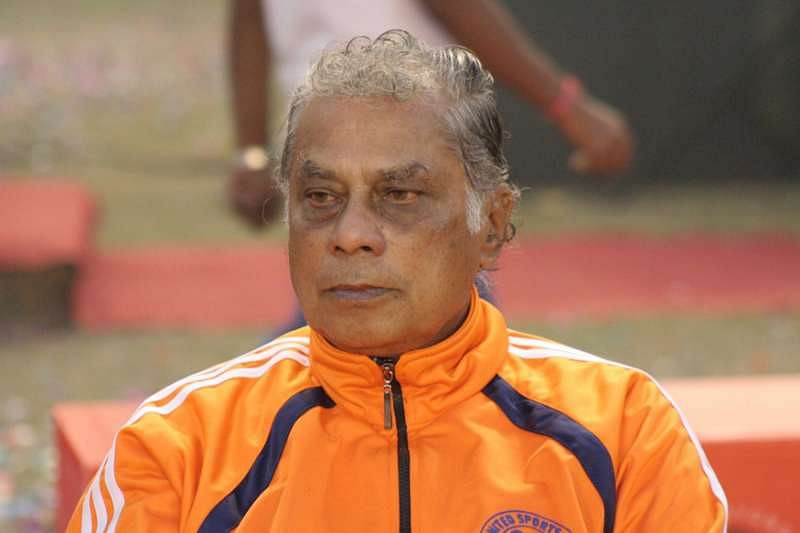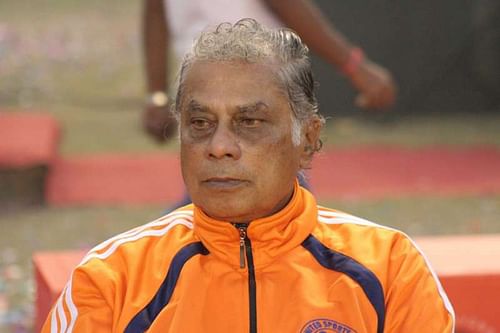
Amal Dutta: A man more sinned against than sinning

Amal Dutta, India’s first ever professional coach who died in Kolkata on July 10, the day of the Euro 2016 final at the age of 87 years was a man more sinned against than sinning. India's first ever professional coach, the short-statured but large-hearted Amal Dutta was a Dr. Jekyll and Mr. Hyde type of character, inspiring, intelligent but often self-destructive. He was recognised as the finest thinker of the game in India.
His attitude to life was refreshingly bold and ahead of his times. In the early 1960s, as a young man, he defied the characteristic Bengali middle-class dream of a secure government job by giving up a cushy job in the Indian Railways to become a full-time football coach. This was a bold step in the early sixties in India when socialist thinking prevailed and private enterprise and individualism were not the buzzwords as they are now. Also in those days income from football was meagre.
He was often abrasive with authorities, either the All India Football Federation or the Indian Football Association (IFA). As he survived on his football coaching skills, he expected proper payment and when this was not fulfilled his penchant for outspoken remarks often landed him in trouble. Sadly his genius as a coach was never fully recognised.
His tenure with the national team was for barely a year in 1987-88. For all his exemplary teaching skills he was never made coach of India's age-group teams, a loss for the game in the country. His inability to compromise prevented him from getting his due recognition. Amal Da as he was popularly called was a perfectionist and a visionary. He courted trouble, financial hardships and even unpopularity but never gave up or compromised.
A man willing to experiment
History will remember Amal Dutta not as just the first ever-professional coach but for his tactical contributions. In 1969 as Mohun Bagan’s coach he introduced the 4-2-4 formation in the country despite opposition from legends like former national skipper Salien Manna. In 1988 as Technical Director of the Indian team, he made them play in the 4-4-2 formation for the first time. In the twilight of his career, Amal Da experimented again in 1997 and used a three-back system and Mohun Bagan played in the celebrated 'Diamond' formation. All these new formations were used to extract the maximum potential from his players. He instilled confidence in the players by diligent practice so that they understood the nuances of the formation.
He was a competent midfielder with East Bengal in the mid-1950s and represented India in the 1954 Asian Games at Manila. To further his knowledge of the game he went to England for a one-year coaching course with their Football Association (FA). He worked under the renowned Walter Winterbottom, England’s first full-time coach.
On his return to India, Amal Dutta's first major assignment as a coach was in 1960 when he trained Railways for the Santosh trophy. In 1963 came his first stint with a big club, when he joined East Bengal midway through the Calcutta league. In the first leg, Mohun Bagan with greats like Chuni Goswami, Jarnail Singh, Kempiah and Arumainayagam in their team had beaten East Bengal 3-0.
However in the return leg, under Amal da's tutelage, East Bengal triumphed over their arch rivals 2-0 with goals by Ashim Moulick and Noor. Rescuing a team in adversity was a regular feature in Amal Dutta's career. As he once jocularly told me, "I am known as a Harley Street specialist. When the patient (losing football club) has been treated by all doctors and not recovered, they come to me."
Amal Dutta remained with East Bengal in 1964 but a year later, he took the first of several bold steps in his chequered career. He quit the security of his job in the Indian Railways and opted to become a full-time football coach. The magnitude of such a step in the mid-sixties can be put in perspective by examining the remuneration received by Calcutta's leading stars in those days. Superstars like Jarnail Singh, Peter Thangraj, Ashim Moulick and Ram Bahadur received Rs 8,000-12,000 per annum. Except Jarnail Singh, all the other players were employed in banks or public sector firms.
Also, the concept of a professional coach was not in vogue during those days. A comparison can also be made with P.K. Banerjee who was then at the peak of his playing career as a right winger with Eastern Railway. P.K. was much in demand by both East Bengal and Mohun Bagan but he never quit the security of his job in Eastern Railway because of family responsibilities and steady income from his job.
Commenting on the risk factor, Amal Dutta had once said, "Football was my passion. I had a dream. I wanted to start a football academy and groom youngsters properly to make them international players. To leave a secure job was a risk. I was newly married and was not sure how I would support my family. I often showed football video --cassettes to neighbourhood children and charged them a small amount to augment my income."
Amal da's dream of setting up his own football academy never materialised as he lacked the temperament to private sector sponsorship and during his coaching career never secured large sums of money.
For some years, Dutta coached outside Calcutta. Having established his credentials as a coach, in Orissa and Kerala, Dutta returned to Calcutta as coach of Mohun Bagan in the 1969-70 season. It was during this season that he made Bagan play in the 4-2-4 formation for the first time. Till then most Indian teams played in the 3-2-5 formation. Dashing and diminutive right back Bhabhani Roy became the first Indian wingback to regularly overlap frequently. Bagan's left wing back that year was the phlegmatic Altaf Ahmed.
Selected for the prestigious Asian All Stars squad in 1965, Altaf belonged to the old school, a defender who excelled in sound interceptions and clean tackling but did not like to overlap and initiate attacks. Amal Dutta pragmatically dealt with Altaf. Realising that Altaf was too set in his ways to change, the left-back was allowed to initiate moves from his own half. Bhabani Roy was younger and faster and so Bagan started playing the 4-2-4 system with only the right back linking up with the attackers.